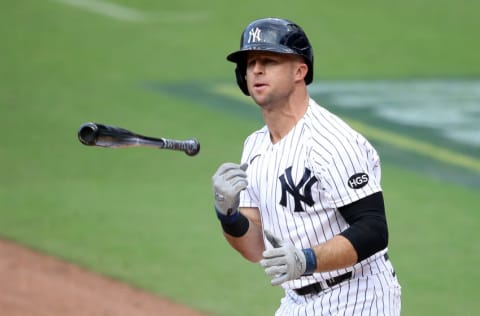Yankees: Red Sox trading for Adam Ottavino continues to look worse

When the New York Yankees traded Adam Ottavino to the Boston Red Sox, just about every baseball fan was shocked. This is the most intense rivalry in all of sports and they’re … doing business? The last time these clubs made a trade was back in 2014 when they swapped Stephen Drew and Kelly Johnson.
But this was much different. Ottavino is a highly skilled relief pitcher. The Red Sox actually need bullpen help. Otto is also very good against right-handed hitters, which make up a majority of the Yankees lineup. Was this a bad move for the Bombers?
From a talent standpoint, sure, we could argue the Yankees lost out here. They traded an effective bullpen piece just to create payroll flexibility. But then again, the Red Sox could’ve addressed the back end of their bullpen quite easily without helping their most hated rival.
Red Sox paid $8.15M for Ottavino and a prospect (Frank German). https://t.co/4DiQBUkQuU
— Chris Cotillo (@ChrisCotillo) February 3, 2021
Unless general manager Chaim Bloom just found a diamond in the rough with Frank German, the pitching prospect the Yankees also sent to Boston in the deal, then we just can’t see how this is a win for the Sox. Otto is a free agent after 2021 and you just gave the Yankees room to breathe under the $210 million luxury tax threshold. Right now, they have a little over $7 million to spend.
That obviously won’t get the Yankees a marquee free agent, but it does leave them with the necessary breathing room to make an in-season trade, which is absolutely colossal in their quest to get back to the World Series.
So we have:
- Helping your rival
- Not adding a closer
- Banking on a bounce-back year for a rental (at a high price)
- Missing out on better opportunities in free agency
Free-agent second baseman Kolten Wong in agreement with Brewers on two-year, $18M contract with a third-year club option, pending physical, source tells @TheAthletic.
— Ken Rosenthal (@Ken_Rosenthal) February 3, 2021
Oh yeah, and if we want to criticize Boston’s other moves, they passed on signing a Gold Glove second baseman (a position they dearly needed to address) in favor of Kiké Hernandez, who, while he has considerable second base experience, is more of a utility player. And Wong only cost $2 million more per year. Wong also has 16.9 WAR and 55 DRS vs Hernandez’s 10.7 WAR and 18 DRS (though we will say Wong has an entire full season over Hernandez).
Still, the differences are stark. Not sure what the Red Sox are doing.
Nonetheless, the more we think about it, the more we have to agree the Ottavino deal was a huge L for Boston, solely because they opted to help their rival in any way imaginable. Thanks, we guess.
